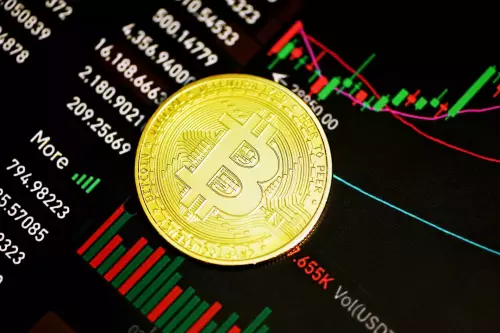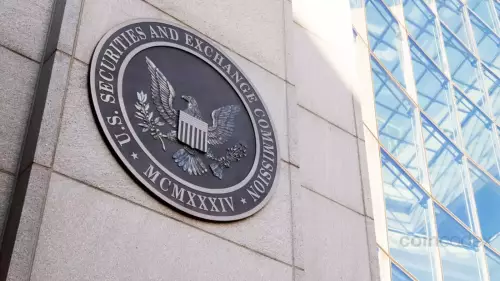 |
|
 |
|
 |
|
 |
|
 |
|
 |
|
 |
|
 |
|
 |
|
 |
|
 |
|
 |
|
 |
|
 |
|
 |
|

Bitcoin Halving: A Technical Milestone with Uncertain Price Implications
On Friday, April 19th, Bitcoin, the world's preeminent cryptocurrency, underwent a significant event known as a "halving." This phenomenon, occurring approximately every four years, marks a fundamental change in the cryptocurrency's underlying technology.
The halving was implemented into Bitcoin's code by its pseudonymous creator, Satoshi Nakamoto, as a way to control the rate at which new bitcoins are created. Essentially, it reduces the reward received by cryptocurrency miners, who verify transactions and create new blocks on the Bitcoin blockchain.
Chris Gannatti, Global Head of Research at WisdomTree, an asset manager specializing in Bitcoin exchange-traded funds, described the halving as "one of the biggest events in crypto this year." Crypto enthusiasts often view the halving as an affirmation of Bitcoin's value as a scarce commodity, with its maximum supply capped at 21 million tokens.
However, skeptics dismiss the halving as merely a technical change that has been hyped by speculators to inflate Bitcoin's price. The halving is part of a broader trend in Bitcoin's recent performance.
In March, Bitcoin surged to an all-time high of $73,803.25, but has since retreated. On the day of the halving, Bitcoin remained relatively stable, experiencing a slight dip of 0.5% to approximately $63,747.
The cryptocurrency market has been buoyed by positive developments such as the US Securities and Exchange Commission's approval of spot Bitcoin exchange-traded funds in January and expectations of central banks reducing interest rates. However, geopolitical tensions and concerns over rising interest rates have overshadowed the market in recent weeks.
Previous halvings in 2012, 2016, and 2020 were followed by price rallies, prompting some crypto enthusiasts to predict a similar trend this time. However, analysts remain cautious, citing factors such as Bitcoin's overbought status and subdued venture capital funding in the crypto industry.
JP Morgan analysts believe that Bitcoin's price may not experience significant gains after the halving, as the event has already been factored into its current market value. They anticipate a potential decline in Bitcoin's price due to its overbought condition and the pessimistic venture capital outlook.
Financial regulators have consistently warned of Bitcoin's high-risk nature and limited real-world applications. Despite these concerns, several regulatory bodies have begun to approve Bitcoin-linked trading products.
Andrew O'Neill, a crypto analyst at S&P Global, expressed skepticism regarding the price prediction implications of previous halvings. He emphasized that the halving is just one factor among many that can influence Bitcoin's price.
As Bitcoin navigates the post-halving landscape, its direction remains uncertain. Geopolitical tensions and expectations of prolonged high-interest rates continue to cast a shadow over global markets, affecting Bitcoin's performance. The cryptocurrency's future trajectory will be shaped by a complex interplay of factors, including investor sentiment, regulatory developments, and macroeconomic conditions.
免責聲明:info@kdj.com
所提供的資訊並非交易建議。 kDJ.com對任何基於本文提供的資訊進行的投資不承擔任何責任。加密貨幣波動性較大,建議您充分研究後謹慎投資!
如果您認為本網站使用的內容侵犯了您的版權,請立即聯絡我們(info@kdj.com),我們將及時刪除。
-

-

-

-

- 比特幣,加密和智商:當天才遇到數字黃金時?
- 2025-09-30 23:17:30
- 當Binance調整保證金交易和炒作面對投資者退出時,高級智商個人大膽的比特幣舉動引發了辯論。這對加密貨幣的未來意味著什麼?
-

- Stablecoins,美國創新和錢包代幣:下一個邊界
- 2025-09-30 23:15:03
- 探索美國創新和諸如$ best的錢包令牌越來越受歡迎的美國的穩定幣的興起。
-

- 烏克蘭的NBU,硬幣和加密貨幣:紐約人
- 2025-09-30 23:14:07
- 探索有關烏克蘭加密貨幣場景,NBU的紀念硬幣和模因硬幣的興起的最新信息。這是一次瘋狂的旅程,所以搭扣了!
-

-

-































































